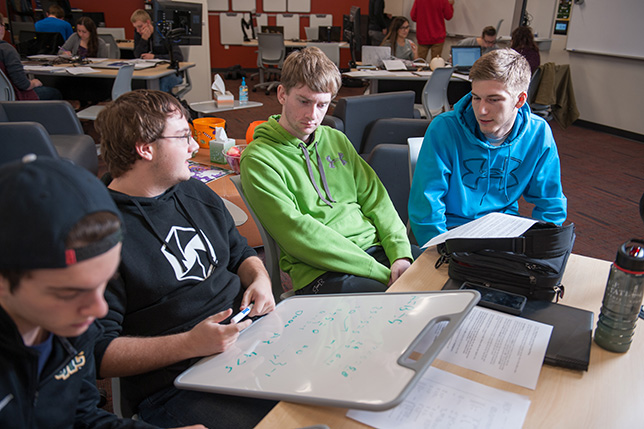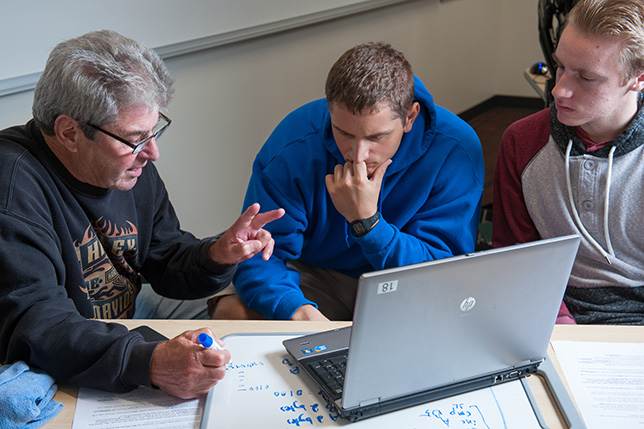Rethinking the Computer Lab of the Future
At St. Norbert College, a revamped computer science lab provides a flexible space for presentation, collaboration and more.
- By Krissy Lukens, Scott Ryan
- 03/15/17

St. Norbert's computer science lab provides space for students to gather to work individually or collaboratively, socialize and call their own.
A planned computer science lab renovation recently gave St. Norbert College the perfect opportunity to rethink how a computer lab should function for students. To get started, our IT staff met with computer science faculty to brainstorm and discuss ideas for the renovated space.
Our computer science department had been using general computer labs to hold course-lab meetings that allowed students to experiment with and extend the concepts covered in class. These spaces had also historically served as a place where students could receive help from undergraduate teaching assistants, as well as congregate, collaborate and commiserate. The computer science faculty at St. Norbert had a strong desire that the revamped space would continue to provide a place for cohort-building activities.
As our teams brainstormed, we developed lists of requirements for our renovated space.
Multi-use space requirements included:
- Closed (formal) lab meetings (two hours weekly) that are part of every computer science class;
- Drop-in use whenever rooms are not closed for formal lab sessions;
- Occasional classroom use;
- Teamwork or individual work;
- Space for undergraduate teaching assistants to hold office hours and offer help sessions to assist first- and second-year students; and
- Space for students to gather to work individually or collaboratively, socialize and call their own.

The lab is also a place where students can receive help with their work.
Physical support requirements included:
- Large tables suitable for teams of four;
- Two large monitors on each table to allow students and instructors to view, critique, adapt and edit multiple files simultaneously without crowding around small screens of personal devices (thus not invading personal space);
- Whiteboards mounted on all four walls to provide space for mini-lectures and significant project design;
- Connectors/adaptors that provide all student devices with access to the monitors;
- Small whiteboards that can be taken to tables for problem-solving by one or two students;
- 10 to 12 laptops for drop-in use, required testing environments and use by those without appropriate hardware (or those whose devices aren't working);
- Access to required software via a reliable network for students whose devices don't have appropriate software; and
- Ability for faculty and teaching assistants to easily move around the room and view what students are working on without being intrusive.
How the Renovated Lab Works
The new room has three modes: presentation, collaboration and open lab.
In presentation mode, the instructor's device is displayed on all monitors in the room. The press of a button turns on all system equipment and switches all monitors to the same input. As soon as the instructor connects his or her own device – either through a wired connection like HDMI or wirelessly through Apple TV – everything is automated. In this mode, any image on the instructor's device shows up on the main projection screen as well as the displays at student workstations. In place of a standard projection screen, a dual-surface board allows instructors and students to mark up whatever is displayed.
When instructors are done presenting or want students to do individual work, they press a button to shift the room into collaboration mode. In this mode, students work together or on their own by connecting their laptops to workstation displays, while the instructor's display is still visible on the main projector screen. As instructors walk around the room, they can help students individually or, if they see many students needing direction, they can quickly switch back to presentation mode.